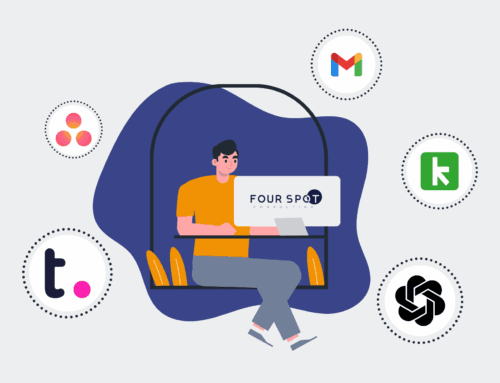How to Conduct a Comprehensive Bias Audit of Your AI Resume Parsing System Step-by-Step
In today’s competitive talent landscape, AI-powered resume parsing systems are invaluable for efficiency. However, without careful oversight, these systems can inadvertently perpetuate or even amplify existing biases, leading to a less diverse workforce and potential legal ramifications. Ensuring fairness and equity in your hiring process is not just a moral imperative but a business necessity. This guide provides a practical, step-by-step approach to conducting a thorough bias audit of your AI resume parsing system, helping you identify and mitigate biases to build a more inclusive and effective talent pipeline.
Step 1: Define Your Audit Scope and Objectives
Before embarking on any audit, clearly define what you intend to achieve. This involves identifying specific areas of potential bias you want to investigate, such as gender, ethnicity, age, or socioeconomic background. Outline the specific metrics you will use to measure bias and the desired outcomes for your system’s performance post-audit. For instance, are you aiming for statistical parity in candidate screening outcomes across different demographic groups, or are you focused on ensuring specific keywords aren’t inadvertently penalizing certain backgrounds? A well-defined scope ensures your audit is focused, measurable, and actionable, preventing wasted effort and providing clear benchmarks for success. This initial clarity is paramount for an effective and efficient process.
Step 2: Collect and Prepare Representative Data Sets
The quality of your audit hinges on the data you use. You must gather diverse and representative datasets that mirror your applicant pool and, ideally, your target employee demographics. This includes historical resumes, job descriptions, and relevant hiring outcome data. Critically, these datasets must be labeled with protected characteristics (e.g., gender, race, age) where legally and ethically permissible, or inferred carefully, to enable bias detection. Ensure data privacy and anonymity protocols are strictly followed. Clean and standardize the data to eliminate inconsistencies, as messy data can obscure real biases or introduce spurious ones. The objective here is to have a robust, unbiased benchmark against which to evaluate your parsing system’s behavior.
Step 3: Select Bias Metrics and Evaluation Tools
With your data ready, choose appropriate bias metrics and tools to assess your AI system. Common bias metrics include disparate impact (measuring different selection rates for various groups), equal opportunity (ensuring similar true positive rates), and demographic parity. You might also consider metrics like predictive parity or fairness through awareness. There are various open-source and commercial tools available (e.g., IBM’s AI Fairness 360, Google’s What-If Tool) that can help automate the detection of these biases. Select tools that align with your chosen metrics and can integrate with your existing AI system. This step is crucial for transforming abstract notions of fairness into quantifiable, measurable outcomes.
Step 4: Execute Bias Detection and Analysis
Run your prepared datasets through your AI resume parsing system and apply the chosen bias detection tools. Analyze the system’s output (e.g., ranking scores, extracted skills, inferred qualities) against the protected characteristics in your labeled data. Look for statistically significant differences in outcomes between demographic groups. For example, does the system consistently assign lower scores to resumes from certain age groups, despite comparable qualifications? Identify specific features or keywords that might be disproportionately influencing these outcomes. Visualize the results to highlight patterns and anomalies, making it easier to pinpoint where and how bias is manifesting within the parsing process.
Step 5: Interpret Results and Identify Root Causes
Simply detecting bias isn’t enough; you must understand *why* it exists. Interpret your analysis results to identify the root causes of the observed biases. Is the bias originating from the training data itself (e.g., historical hiring patterns favoring certain demographics)? Is it embedded in the algorithm’s design? Or are certain features, like school names or unique linguistic patterns, inadvertently serving as proxies for protected attributes? This phase often requires deep dives into feature importance and model explanations. Engage subject matter experts from HR, data science, and diversity and inclusion to provide context and insights, moving beyond statistical correlation to practical understanding.
Step 6: Develop and Implement Mitigation Strategies
Once root causes are identified, develop targeted strategies to mitigate bias. This could involve retraining the model with more balanced datasets, adjusting algorithm parameters, or implementing fairness-aware machine learning techniques during the model’s development. You might also consider post-processing techniques that adjust scores to promote fairness without altering the core model. Beyond technical fixes, review and revise your job descriptions, sourcing strategies, and overall hiring policies to address systemic human biases that may contribute to the problem. Implementing these changes requires careful planning and often an iterative approach to ensure effectiveness.
Step 7: Continuous Monitoring and Iteration
Bias is not a static problem; AI systems continuously learn and evolve, as do societal norms. Establish a robust framework for ongoing monitoring of your AI resume parsing system’s fairness metrics. Regularly re-run audits, ideally on a predefined schedule (e.g., quarterly or biannually), and with new data to detect emerging biases. Incorporate feedback loops from human recruiters and candidates to catch issues that automated systems might miss. This continuous vigilance and iterative improvement process ensure that your AI system remains fair, ethical, and aligned with your organizational values, safeguarding both your reputation and the integrity of your hiring process.
If you would like to read more, we recommend this article: AI-Powered Recruiting Automation: Streamlining Your Hiring Process








